Roland Kaminski
University of Potsdam, Germany
Routing and Scheduling in Answer Set Programming applied to Multi-Agent Path Finding: Preliminary Report
Mar 18, 2024Abstract:We present alternative approaches to routing and scheduling in Answer Set Programming (ASP), and explore them in the context of Multi-agent Path Finding. The idea is to capture the flow of time in terms of partial orders rather than time steps attached to actions and fluents. This also abolishes the need for fixed upper bounds on the length of plans. The trade-off for this avoidance is that (parts of) temporal trajectories must be acyclic, since multiple occurrences of the same action or fluent cannot be distinguished anymore. While this approach provides an interesting alternative for modeling routing, it is without alternative for scheduling since fine-grained timings cannot be represented in ASP in a feasible way. This is different for partial orders that can be efficiently handled by external means such as acyclicity and difference constraints. We formally elaborate upon this idea and present several resulting ASP encodings. Finally, we demonstrate their effectiveness via an empirical analysis.
plingo: A system for probabilistic reasoning in clingo based on lpmln
Jun 23, 2022

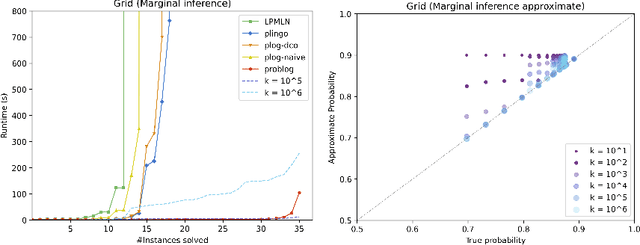
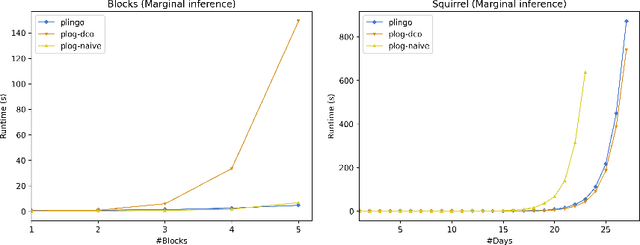
Abstract:We present plingo, an extension of the ASP system clingo with various probabilistic reasoning modes. Plingo is centered upon LP^MLN, a probabilistic extension of ASP based on a weight scheme from Markov Logic. This choice is motivated by the fact that the core probabilistic reasoning modes can be mapped onto optimization problems and that LP^MLN may serve as a middle-ground formalism connecting to other probabilistic approaches. As a result, plingo offers three alternative frontends, for LP^MLN, P-log, and ProbLog. The corresponding input languages and reasoning modes are implemented by means of clingo's multi-shot and theory solving capabilities. The core of plingo amounts to a re-implementation of LP^MLN in terms of modern ASP technology, extended by an approximation technique based on a new method for answer set enumeration in the order of optimality. We evaluate plingo's performance empirically by comparing it to other probabilistic systems.
On the Foundations of Grounding in Answer Set Programming
Aug 10, 2021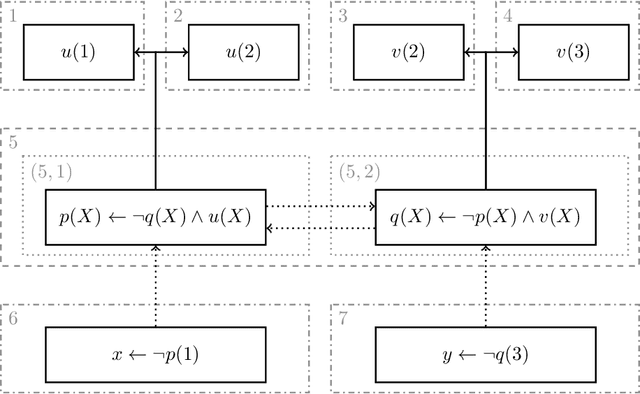
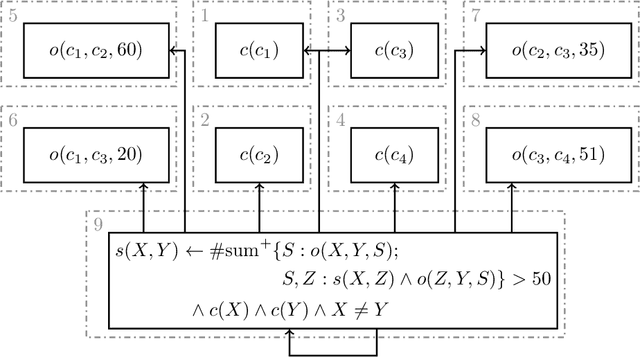
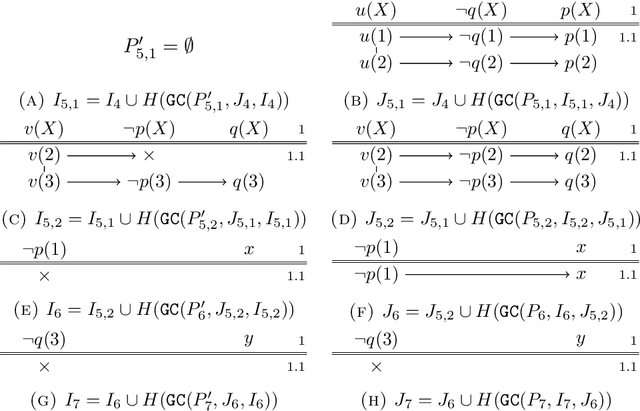
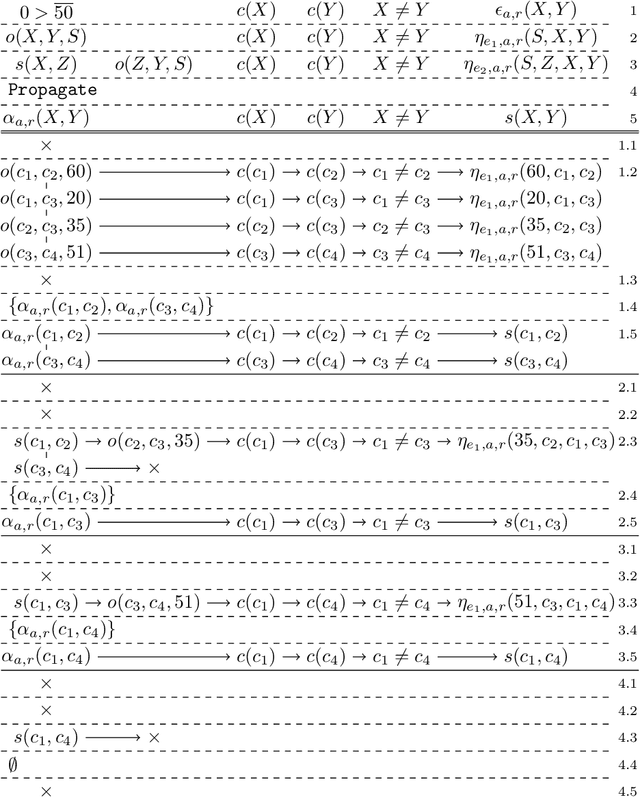
Abstract:We provide a comprehensive elaboration of the theoretical foundations of variable instantiation, or grounding, in Answer Set Programming (ASP). Building on the semantics of ASP's modeling language, we introduce a formal characterization of grounding algorithms in terms of (fixed point) operators. A major role is played by dedicated well-founded operators whose associated models provide semantic guidance for delineating the result of grounding along with on-the-fly simplifications. We address an expressive class of logic programs that incorporates recursive aggregates and thus amounts to the scope of existing ASP modeling languages. This is accompanied with a plain algorithmic framework detailing the grounding of recursive aggregates. The given algorithms correspond essentially to the ones used in the ASP grounder gringo.
How to build your own ASP-based system?!
Aug 15, 2020
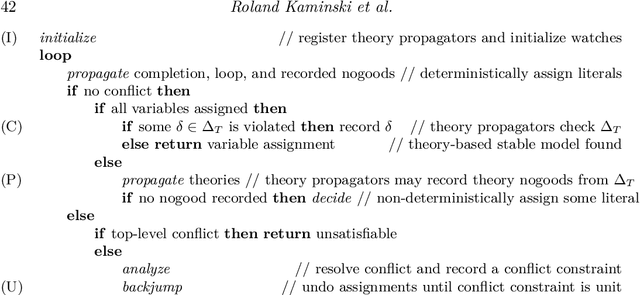
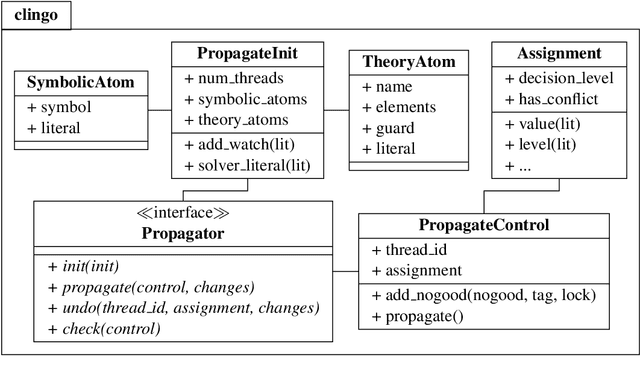
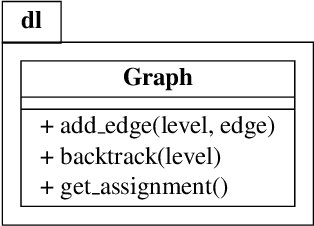
Abstract:Answer Set Programming (ASP) has become a popular and quite sophisticated approach to declarative problem solving. This is arguably due to its attractive modeling-grounding-solving workflow that provides an easy approach to problem solving, even for laypersons outside computer science. Unlike this, the high degree of sophistication of the underlying technology makes it increasingly hard for ASP experts to put ideas into practice. For addressing this issue, this tutorial aims at enabling users to build their own ASP-based systems. More precisely, we show how the ASP system CLINGO can be used for extending ASP and for implementing customized special-purpose systems. To this end, we propose two alternatives. We begin with a traditional AI technique and show how meta programming can be used for extending ASP. This is a rather light approach that relies on CLINGO's reification feature to use ASP itself for expressing new functionalities. Unlike this, the major part of this tutorial uses traditional programming (in PYTHON) for manipulating CLINGO via its application programming interface. This approach allows for changing and controlling the entire model-ground-solve workflow of ASP. Central to this is CLINGO's new Application class that allows us to draw on CLINGO's infrastructure by customizing processes similar to the one in CLINGO. For instance, we may engage manipulations to programs' abstract syntax trees, control various forms of multi-shot solving, and set up theory propagators for foreign inferences. Another cross-sectional structure, spanning meta as well as application programming, is CLINGO's intermediate format, ASPIF, that specifies the interface among the underlying grounder and solver. We illustrate the aforementioned concepts and techniques throughout this tutorial by means of examples and several non-trivial case-studies.
ASP-Core-2 Input Language Format
Nov 11, 2019Abstract:Standardization of solver input languages has been a main driver for the growth of several areas within knowledge representation and reasoning, fostering the exploitation in actual applications. In this document we present the ASP-Core-2 standard input language for Answer Set Programming, which has been adopted in ASP Competition events since 2013.
Temporal Answer Set Programming on Finite Traces
Apr 26, 2018
Abstract:In this paper, we introduce an alternative approach to Temporal Answer Set Programming that relies on a variation of Temporal Equilibrium Logic (TEL) for finite traces. This approach allows us to even out the expressiveness of TEL over infinite traces with the computational capacity of (incremental) Answer Set Programming (ASP). Also, we argue that finite traces are more natural when reasoning about action and change. As a result, our approach is readily implementable via multi-shot ASP systems and benefits from an extension of ASP's full-fledged input language with temporal operators. This includes future as well as past operators whose combination offers a rich temporal modeling language. For computation, we identify the class of temporal logic programs and prove that it constitutes a normal form for our approach. Finally, we outline two implementations, a generic one and an extension of clingo.
Multi-shot ASP solving with clingo
Mar 20, 2018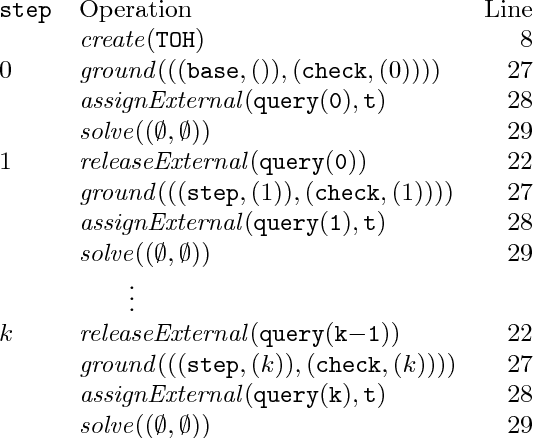

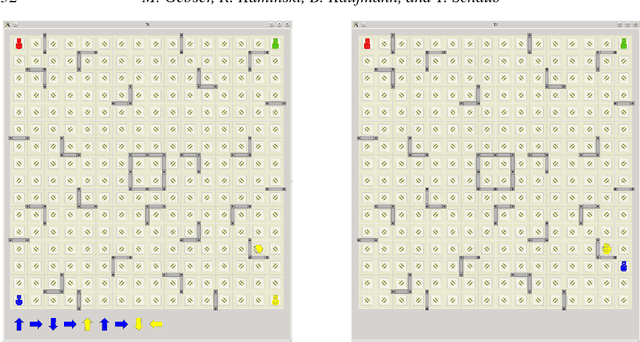
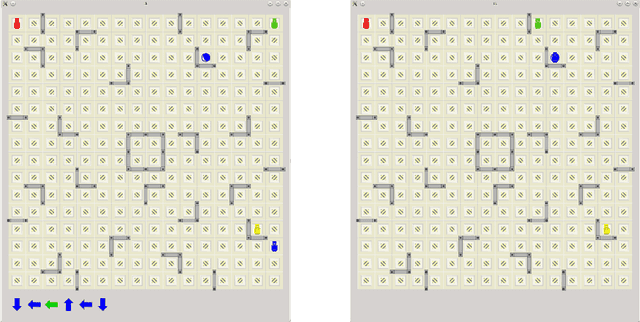
Abstract:We introduce a new flexible paradigm of grounding and solving in Answer Set Programming (ASP), which we refer to as multi-shot ASP solving, and present its implementation in the ASP system clingo. Multi-shot ASP solving features grounding and solving processes that deal with continuously changing logic programs. In doing so, they remain operative and accommodate changes in a seamless way. For instance, such processes allow for advanced forms of search, as in optimization or theory solving, or interaction with an environment, as in robotics or query-answering. Common to them is that the problem specification evolves during the reasoning process, either because data or constraints are added, deleted, or replaced. This evolutionary aspect adds another dimension to ASP since it brings about state changing operations. We address this issue by providing an operational semantics that characterizes grounding and solving processes in multi-shot ASP solving. This characterization provides a semantic account of grounder and solver states along with the operations manipulating them. The operative nature of multi-shot solving avoids redundancies in relaunching grounder and solver programs and benefits from the solver's learning capacities. clingo accomplishes this by complementing ASP's declarative input language with control capacities. On the declarative side, a new directive allows for structuring logic programs into named and parameterizable subprograms. The grounding and integration of these subprograms into the solving process is completely modular and fully controllable from the procedural side. To this end, clingo offers a new application programming interface that is conveniently accessible via scripting languages.
Clingo goes Linear Constraints over Reals and Integers
Jul 13, 2017
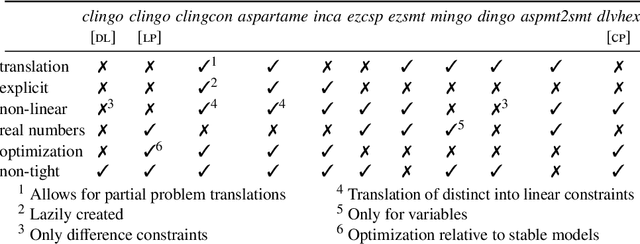
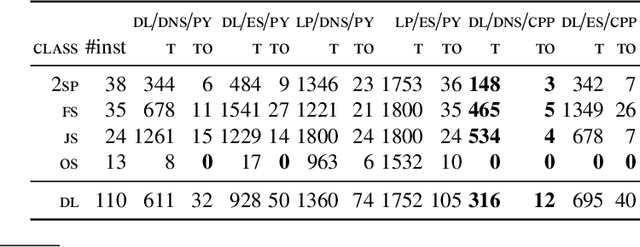
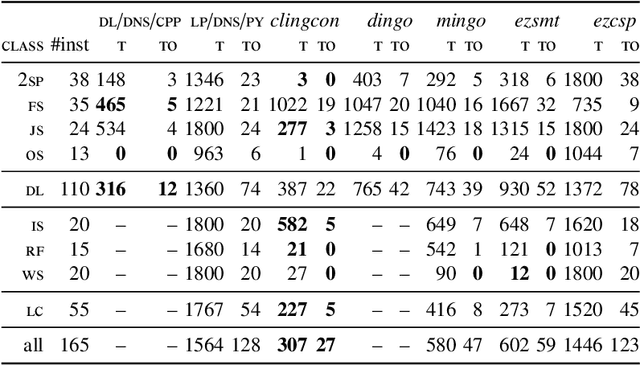
Abstract:The recent series 5 of the ASP system clingo provides generic means to enhance basic Answer Set Programming (ASP) with theory reasoning capabilities. We instantiate this framework with different forms of linear constraints, discuss the respective implementations, and present techniques of how to use these constraints in a reactive context. More precisely, we introduce extensions to clingo with difference and linear constraints over integers and reals, respectively, and realize them in complementary ways. Finally, we empirically evaluate the resulting clingo derivatives clingo[dl] and clingo[lp] on common fragments and contrast them to related ASP systems. This paper is under consideration for acceptance in TPLP.
Grounding Recursive Aggregates: Preliminary Report
Mar 12, 2016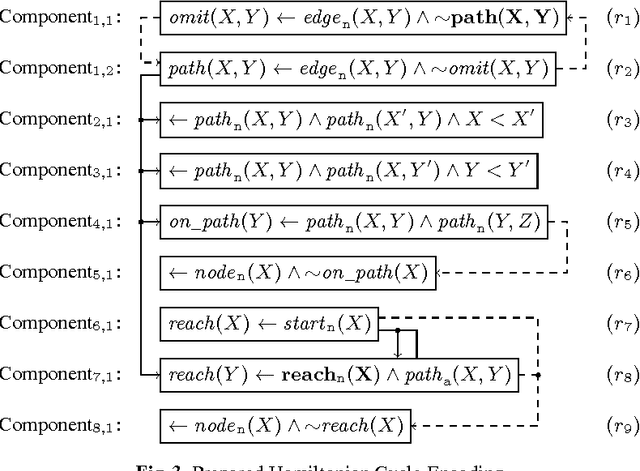

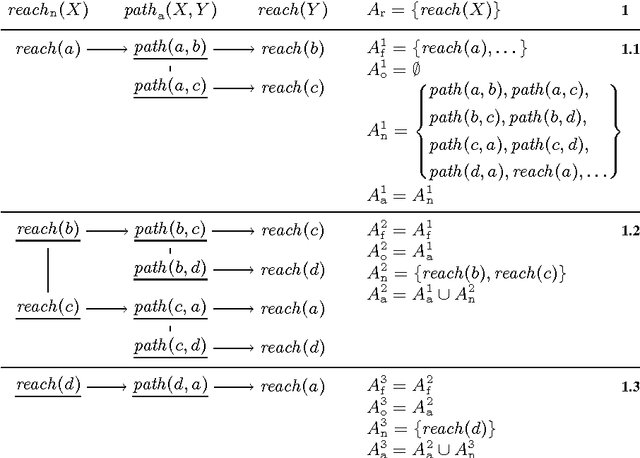
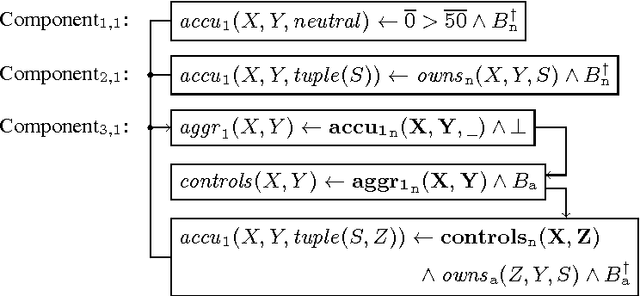
Abstract:Problem solving in Answer Set Programming consists of two steps, a first grounding phase, systematically replacing all variables by terms, and a second solving phase computing the stable models of the obtained ground program. An intricate part of both phases is the treatment of aggregates, which are popular language constructs that allow for expressing properties over sets. In this paper, we elaborate upon the treatment of aggregates during grounding in Gringo series 4. Consequently, our approach is applicable to grounding based on semi-naive database evaluation techniques. In particular, we provide a series of algorithms detailing the treatment of recursive aggregates and illustrate this by a running example.
Solver Scheduling via Answer Set Programming
Jan 06, 2014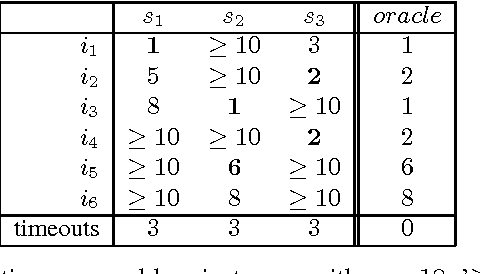
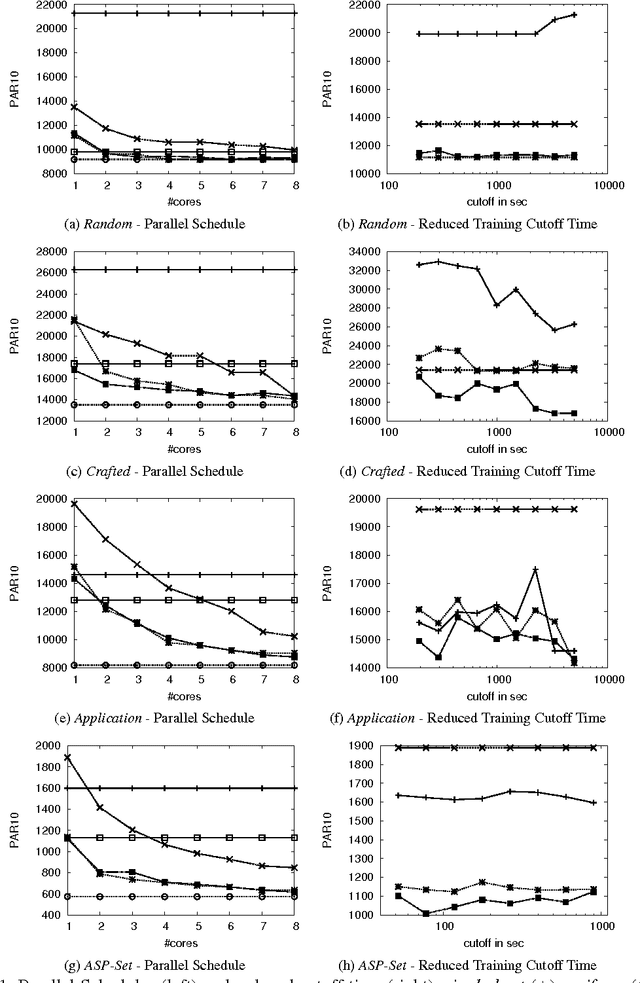
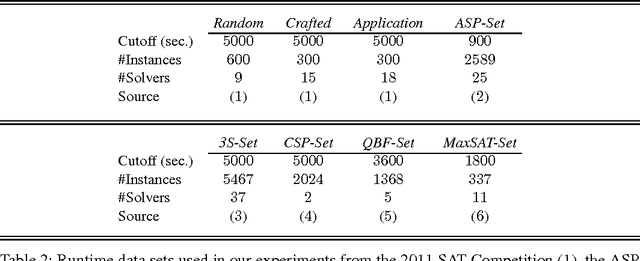
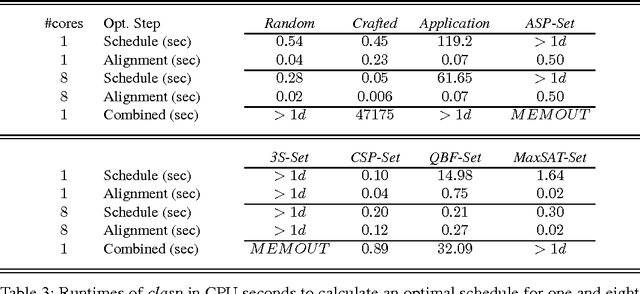
Abstract:Although Boolean Constraint Technology has made tremendous progress over the last decade, the efficacy of state-of-the-art solvers is known to vary considerably across different types of problem instances and is known to depend strongly on algorithm parameters. This problem was addressed by means of a simple, yet effective approach using handmade, uniform and unordered schedules of multiple solvers in ppfolio, which showed very impressive performance in the 2011 SAT Competition. Inspired by this, we take advantage of the modeling and solving capacities of Answer Set Programming (ASP) to automatically determine more refined, that is, non-uniform and ordered solver schedules from existing benchmarking data. We begin by formulating the determination of such schedules as multi-criteria optimization problems and provide corresponding ASP encodings. The resulting encodings are easily customizable for different settings and the computation of optimum schedules can mostly be done in the blink of an eye, even when dealing with large runtime data sets stemming from many solvers on hundreds to thousands of instances. Also, the fact that our approach can be customized easily enabled us to swiftly adapt it to generate parallel schedules for multi-processor machines.
 Add to Chrome
Add to Chrome Add to Firefox
Add to Firefox Add to Edge
Add to Edge